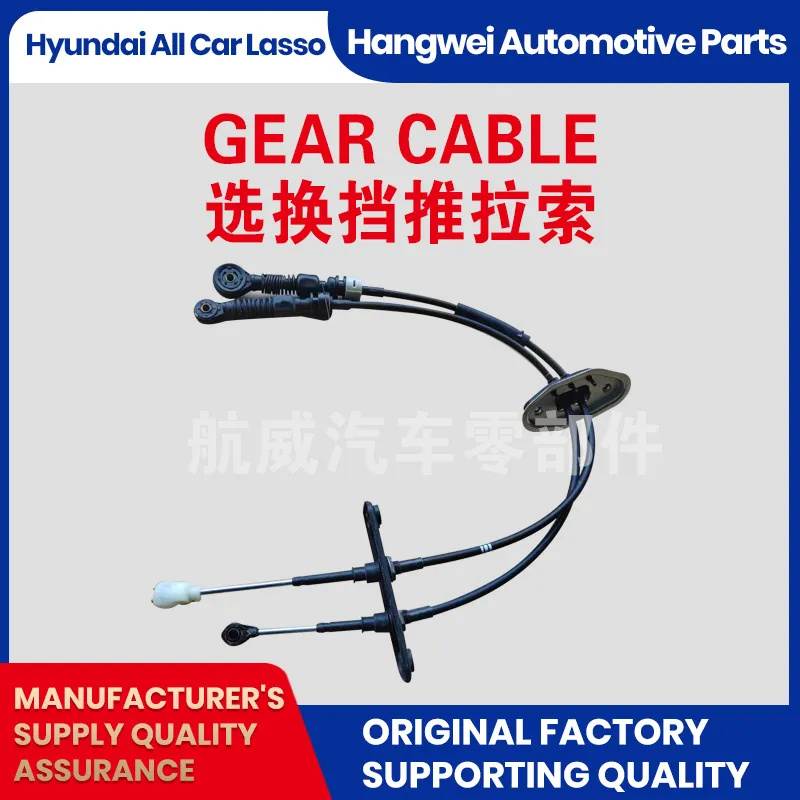Dual Cable Throttle Control System for Enhanced Vehicle Performance and Precision Handling
Understanding the Dual Cable Throttle Assembly A Comprehensive Overview
The dual cable throttle assembly is a crucial component in various vehicles, notably in motorcycles and some types of cars. This assembly plays a pivotal role in controlling the engine's power and responsiveness, directly affecting the vehicle's performance and drivability. In this article, we will delve into the essence of dual cable throttle assemblies, their functioning, advantages, and why they are preferred in certain applications.
What is a Dual Cable Throttle Assembly?
A dual cable throttle assembly consists of two separate cables connected to the throttle body of an engine. One cable is responsible for opening the throttle, allowing air-fuel mixture into the engine. In contrast, the second cable serves as a return mechanism, ensuring that the throttle returns to its closed position when the rider or driver releases pressure from the throttle control (like a twist grip or pedal). This design enhances safety and responsiveness, making it an ideal choice for performance vehicles.
How Does it Work?
The operation of a dual cable throttle assembly is fairly straightforward yet ingenious. When the rider twists the throttle or presses the accelerator pedal, the first cable pulls on the throttle mechanism, which opens the throttle valve. This allows the necessary air and fuel mixture to enter the engine, leading to acceleration. Concurrently, the secondary cable acts to maintain tension and control, returning the throttle to its original position when the input is removed.
This dual-cable system provides a more linear response compared to a single cable system, offering a smoother acceleration and more controlled deceleration
. It also reduces the risk of throttle sticking, which can be dangerous, especially at high speeds.dual cable throttle assembly

Advantages of Dual Cable Throttle Assemblies
1. Enhanced Safety The primary advantage of a dual cable system is the built-in safety feature that the return cable provides. In cases where the primary cable may become jammed or stuck, the return cable can help close the throttle and prevent uncontrolled acceleration.
2. Improved Responsiveness The dual cable mechanism allows for better feedback and handling characteristics. Riders often find that they have greater control over their vehicles, leading to a more enjoyable riding experience, particularly in performance scenarios.
3. Durability and Reliability Dual cable systems are often more robust compared to single cable systems. They tend to withstand wear and tear better, as the load is distributed across two cables instead of one, minimizing the risk of failure.
4. Adaptability in Design Engineers have the flexibility to design more complex throttle controls. This adaptability is crucial for vehicles requiring precise throttle modulation, such as racing motorcycles or high-performance cars.
Conclusion
The dual cable throttle assembly exemplifies the ingenious engineering found in modern vehicles, contributing significantly to safety, performance, and rider experience. As technology continues to evolve, many vehicles still rely on this reliable system, underscoring its practicality and effectiveness in various automotive applications. Whether you are a motorcycle enthusiast or simply curious about vehicle mechanics, understanding the function and advantages of the dual cable throttle assembly can deepen your appreciation for the intricate systems that make our vehicles operate safely and efficiently. As vehicle performance demands increase, so too will the need for reliable systems like these, ensuring that the dual cable throttle assembly remains a staple in the automotive world for years to come.
-
Workings of Clutch Pipe and Hose SystemsNewsJun.04,2025
-
The Inner Workings of Hand Brake Cable SystemsNewsJun.04,2025
-
The Secrets of Throttle and Accelerator CablesNewsJun.04,2025
-
The Hidden Lifeline of Your Transmission Gear Shift CablesNewsJun.04,2025
-
Demystifying Gear Cables and Shift LinkagesNewsJun.04,2025
-
Decoding Clutch Line Systems A Comprehensive GuideNewsJun.04,2025
